Scientific name Oryctolagus cuniculus Gestation period 28 – 31 days | Mass 5.5 kg Rank Breed | |
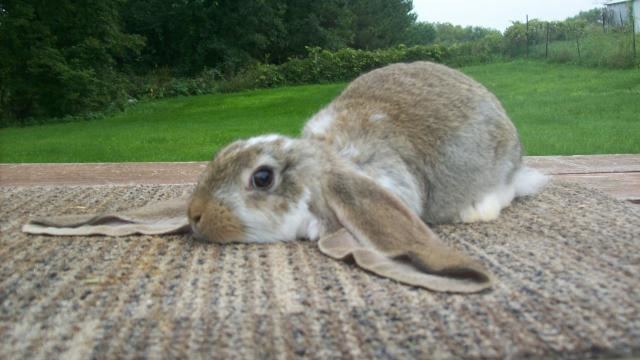 | ||
Similar French Lop, Mini Lop, American Fuzzy Lop, English Spot, Jersey Wooly | ||
The English Lop is a fancy breed of domestic rabbit that was developed in England, in the 19th century through selective breeding, and is believed to be the first breed of lop rabbit developed by humans, and possibly one of the oldest breeds of domestic rabbit. Averaging 11 pounds (5.5 kg), the English Lop is characterized by its distinctively long lop ears, bold head and large body size, and can live up to five years or more.
Contents
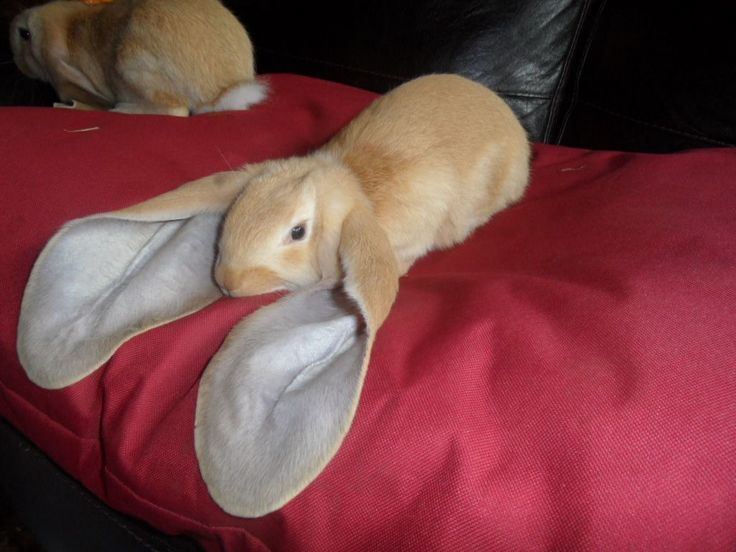
History
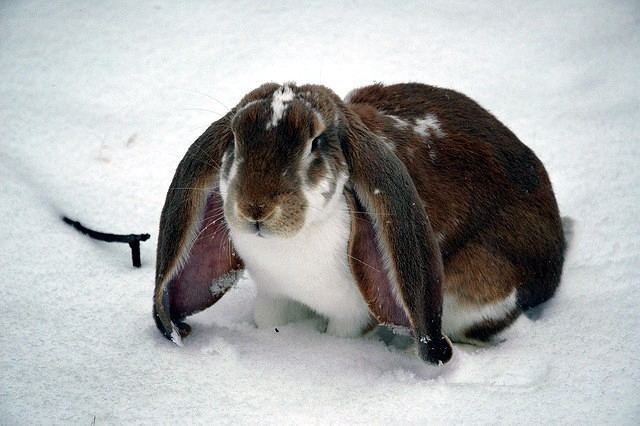
As the first breed of lop rabbit, the English Lop was one of the first fancy breeds of rabbit developed in England, in the 19th century for the purposes of exhibition as a response to rise of animal fancy and consequently the rabbit's emergence as a mainstream household pet during the Victorian era, marking a departure from the earlier role of domesticated rabbit breeding for meat, fur and wool production. Later, the English Lop was bred with other Continental giant breeds of rabbit gave rise to a number of new breeds of lop rabbit, including the French Lop, which developed from breeding between the English Lop and Flemish Giant, and the Holland Lop, which was in turn developed from the French Lop and the Netherlands Dwarf. it is thought that the English lop got the large ears because in the Algeirs it was hot and with the big ears they kept cool.
Appearance

This breed is the original Lop. These rabbits are longer and of a more slender build than their other Lop cousins and they are most noted by their characteristically long lop ears, which can be anywhere from 21" to 32" (tip to tip) the largest of any rabbit breed. Ears reach the end of their growth after approximately 5 months of age, although males can gain as much as an inch as their skull matures. English Lops are bred in both solids and brokens(colors broken by white) and within this, they can come in several different colours, including (but not limited to) Black, orange/fawn, blue, agouti/opal, chinchilla, Red Eyed White, and blue and black torts. The American Rabbit Breeders Association allows all recognized lop colors to be shown in either Solid or Broken groups other than pointed whites. English lops have a smooth, 'flyback' short coat, and their ears should be properly furred and silky to the touch. In body they should resemble a mandolin cut in half, a wide nose and broad head with no visible crown, long, loose hanging ears, strong shoulders and a rise that results in a round, deep body over the hips and flanks. Does can weigh anywhere from 10-15 lbs, with bucks generally weighing 9-12 lbs.
Lifestyle

The English Lop needs a relatively large hutch or a shed/aviary conversion so it has room to move about without standing on its ears. It is common for a wooden hutch made of a heavy wood with a waterproof roof, and raised off the ground to be provided if the rabbit is living outdoors, or a wooden hutch or cage if it is kept indoors. The cage would have a plastic (not wire) with a wire lid fixed to the base. All rabbits must have an adequate exercise area, whether it is an outside run or an enclosed area in the house. The floor of the cage or hutch should be covered with soft material such as hay or blankets (woodshavings can cause respiratory problems), and in cold or wet weather, bedding material, such as straw can be provided for the outdoor rabbit. It is recommended that the rabbit hutch or cage be cleaned out weekly and any old food, bedding be removed every three days to prevent soiling of the fur and special hutch disinfectants be used to prevent the spread of bacteria. Also, an earthenware food bowl and a drinking bottle will also be required to feed and water the rabbit. Water bowls are not recommended as they will get their ears wet. Unlike other breeds, the English Lop will only require mild attention to grooming due to its short-hair. They can cope with hot weather provided they have cool shade to rest in and are out of direct sunlight but in the cold their ears are at risk of frostbite so they should be kept in an enclosed warm, dry area out of cold draughts.
Behaviour
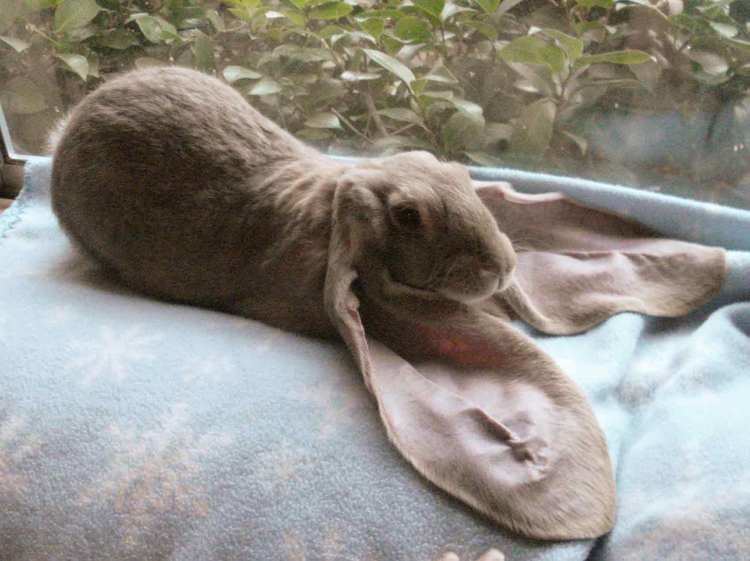
Adult English Lops are often referred to as the "dogs of the rabbit world". They are generally known to be quite placid (even lazy), outgoing, curious and friendly. They can make wonderful pets for children, although as a large breed rabbit any interaction between child and rabbit should be supervised.
Feeding

Due to its relaxed and placid temperament, the English Lop is known to be relatively inactive. Like the majority of rabbits, the most Legume hays are higher in protein, calories, and calcium, which in excess can cause kidney stones and loose stool. This type of hay should be reserved for young kits or lactating does.
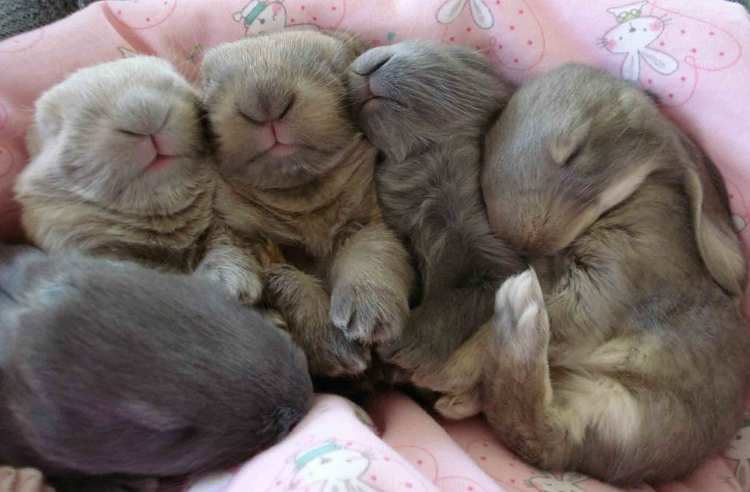
It is recommended that the English Lop, like other rabbits, receive a standard intake of 2 cups of a good, quality pellet, with 16-18% plant protein, unlimitted grass hay, and constant access to fresh clean water. It is common for some owners to provide treats, although in very limited quantities, which can include a slice of strawberry, or other healthy foods. Commercial treats are available in the pet stores in shops and can be occasionally used, although even more sparingly, since they typically feature a higher sugar and starch content.
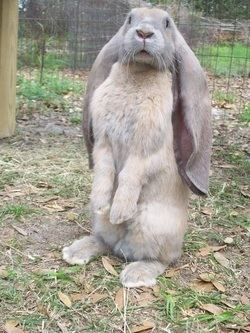
Some of the vegetables that rabbits enjoy are escarole, turnips, collards, kale, parsley, thyme, cilantro, dandelion, and basil. The green, leafy tops of radish and carrots also are excellent sources of nutrients—more than the vegetable itself. New vegetables should be introduced slowly due to the delicate digestive systems of rabbits. It is recommended that cauliflower, broccoli and cabbage be avoided, as they cause gas and can lead to gastrointestinal stasis, which can be fatal. Vegetables such as potatoes and corn should also avoided due to their high starch content. English Lops also require an unlimited amount of fresh water, usually provided for in a water crock, tip-proof ceramic pet dish, or hanging water bottle.
Health
Due to the large ear size, English lops are slightly more vulnerable to a number of health problems, particularly ear infections, and it is advised that the ears should be checked periodically, especially for excess wax that can be accumulated on their deep ear canals and cleaned when appropriate. Ear blemishes can be kept to a minimum by keeping the toenails clipped, which can prevent injuries arising from the rabbit treading on its ears. The large surface area of its ears and body, and the absence of a dense undercoat can result in greater heat loss, which can become a problem for outdoor rabbits in cold climates and winters, and in the onset of these conditions, special measures should be taken to insulate the hutch, such as the provision of increased bedding and hay, and draft excluders. In freezing conditions, an English Lop should never be given a water dish or crock, since wet ears will freeze and even break under the right conditions. Accordingly, English Lops do better in heat than many other rabbit breeds, due to the cooling factor of their large ears. However, any temperature over 85 degrees is considered dangerously high and care should be made to ensure the rabbit has plenty of shade, fresh water, or cool surface to lie against. An English Lop can live in either a solid bottom hutch or cage with bedding provided, or an adequetly spaced wire bottom cage provided they have a thick resting board/pad to prevent injury to hocks.
Breeding
The ideal age for the female English Lop rabbit to start breeding is 10 months of age. The female English Lop rabbit is known to be particularly prolific, with rich milk, and a good maternal sense, and can produce large litters of between 5-12 babies, with a gestation period of between 28–35 days. On average they give birth at 30–32 days. It is during the first 16 weeks of an English Lop's life that its ears undergo its most rapid growth, and for this period, theirs ears will require special care and attention. Although a baby English Lop is usually born with normal-sized ears, for a month, each week the ears' size will double. At about four weeks old, the ears will be longer than the English Lop's body and the rabbits will be prone to accidents or injuries, such as tripping over their ears, or accidentally scratching them frequently, and more care should be given during this initial stage.
Records
On November 1, 2003 the ears of an English Lop called Nipper's Geronimo were measured at 79 cm (31.125 in) in a complete span at the American Rabbit Breeders Association National Convention in Wichita, Kansas, USA and are recorded as the largest measured ear-span of a rabbit, and a Guinness World Record.
